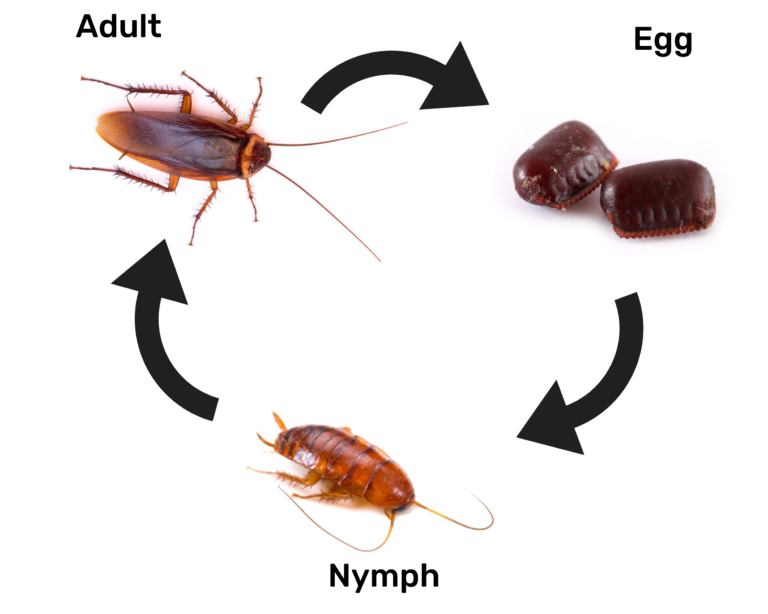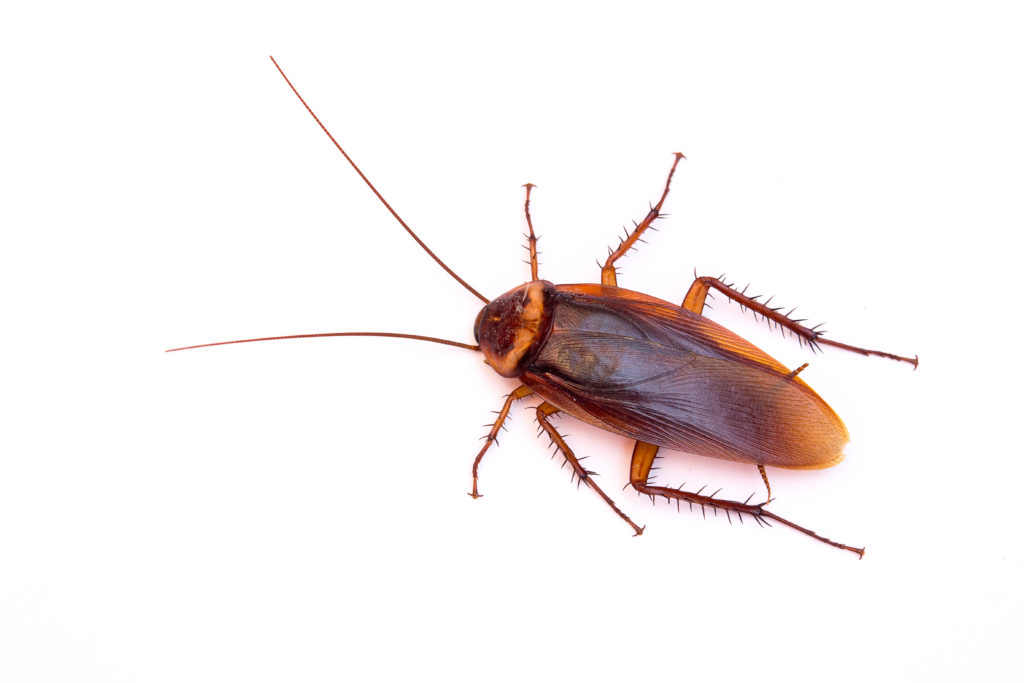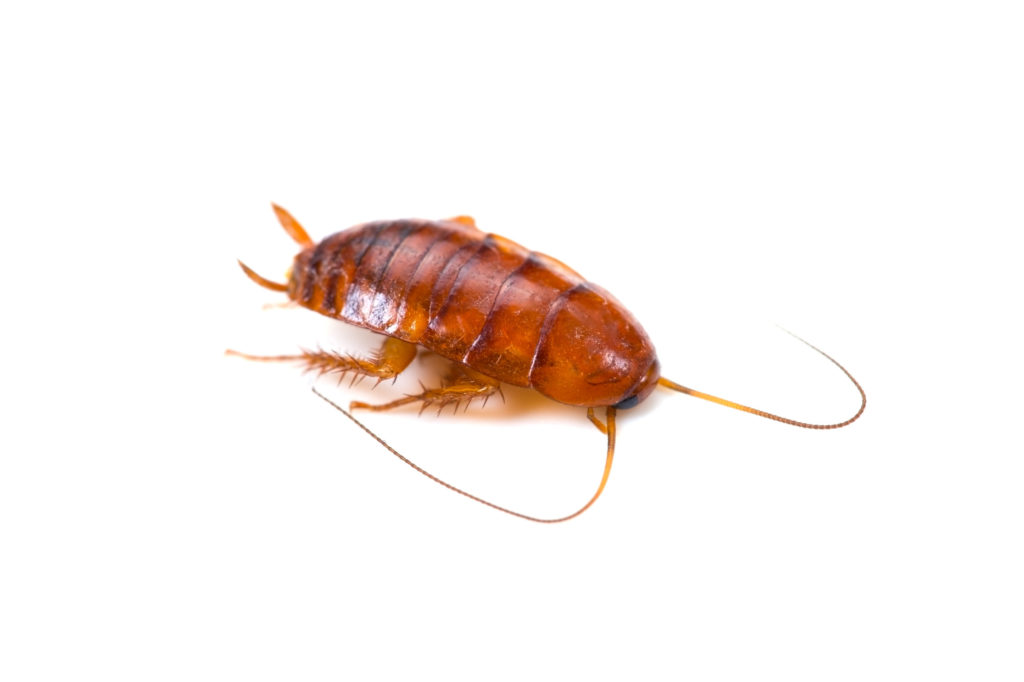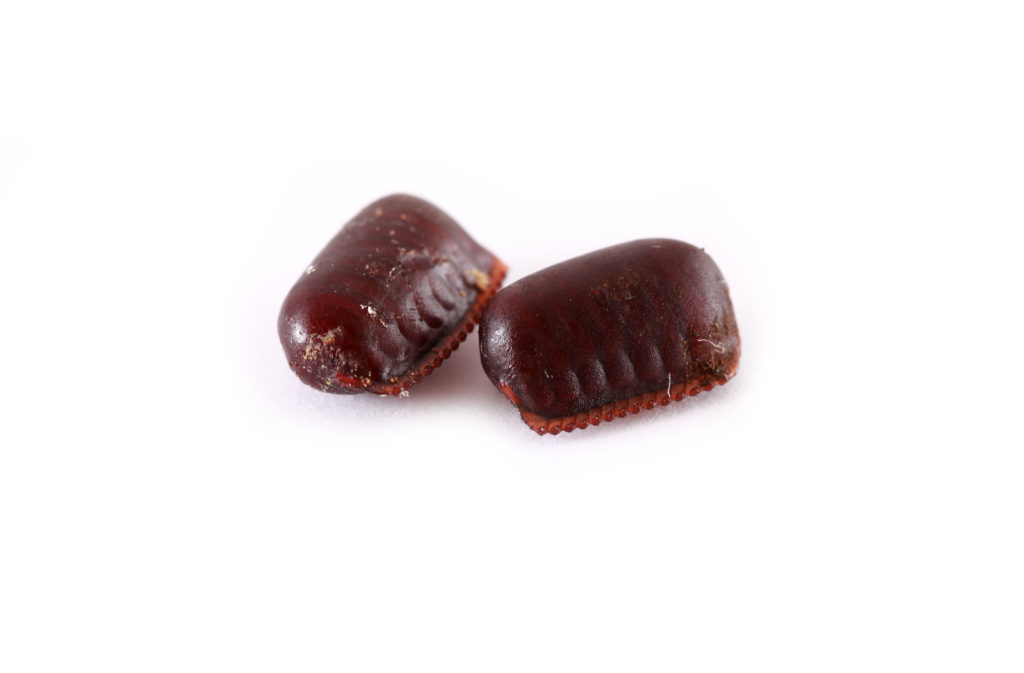You are sick of American roaches crawling around your home.
They make you feel uncomfortable and unsafe.
But, while you want to get rid of these pests ASAP, you’re unsure how to go about it.
And you’re not quite ready to cut professional exterminators an expensive check.
I get it.
Dealing with roaches is one of the worst feelings in the world.
But, I am here to tell you–you can win this fight!
Here, we’ll go over all the information you need to get rid of these roaches once and for all without breaking the bank.
1. Identification
The first step to treating any cockroach infestation is identification.
You’ll need to identify if what you’re dealing with is actually an American cockroach.
Here is a photo of American cockroaches at each life cycle.

Different species of roaches behave differently, so it’s essential to identify what you have correctly.
This way, you’ll know exactly how to terminate the roaches in your home.
If you’re unsure, I recommend setting up a sticky trap.
Sticky traps help you identify what types of cockroaches you have, how large your infestation is.
Sticky traps attract roaches with a specific scent.
Once the cockroaches walk over the trap, the glue will prevent them from crawling out.
Place 6-8 of these around your house.
Some ideal places to put these traps are under appliances, inside cabinets, under bathroom toilets, and near water sources.
Check the traps daily, and during the day when roaches are less active.
It may take a few days to get a decent sample if you have a smaller infestation.
But, if with larger infestations, one day is typically enough.
2. Find Where They Live and Travel
Once you have confirmed that you’re dealing with an American roach and the level of infestation you have, you can start planning how to get rid of them.
Before you can start setting up traps and baits, you’ll need to find ideal target locations first.
American roaches love dark, damp, warm places with food and water nearby.
As such, they are likely hiding in your kitchen or bathroom.
When applying treatments, make sure to cover these two areas first.
In particular, check:
- Under your kitchen and bathroom sink.
- Behind, under, and on the side of appliances.
- On the bottom of your kitchen countertops.
- On top of cabinets and shelves.
- Baseboards and crevices at the bottom of the cabinets.
- Inside kitchen cabinets. Typically at the bottom drawers or the corners of cabinets.
- Near trash or inside trash cans.
- Near water sources such as pipes or hoses.
- Sewer lines
- Garbage disposals
- Inside your pipes, sinks, showers. Check these especially if you have not used these for a long period of time. The water evaporates and they can crawl inside from the sewers.
3. Apply Gel Bait to High Traffic Areas
Gel bait is one of the most effective ways to eliminate cockroach infestations.
This control method is highly effective because it implements tertiary kills.
Here’s what I mean.
Gel baits turn cockroach feces into poison.
When a cockroach ingests gel bait, they don’t die right away.
Instead, roaches return to their homes where they defecate.
Because juvenile roaches (nymphs) rely on feces to survive, the toxic wastes will kill them.
But the termination doesn’t end there.
Once the nymphs die, they pass on the poison to the other cockroaches that eat their bodies.
So how do you apply bait gels?
Bait gel can take one of two forms.
- Bait Stations
- Syringe or Tube
Bait stations are containers where roaches can go and eat the gel bait.
While these traps move around, they can be limiting.
They don’t fit in many high traffic areas such as small holes and crevices.
To get around this, use gel baits in the form of tubes or syringes.
You can easily apply them into tiny cracks and crevices where roaches travel.
I recommend using both bait stations and syringes for a lasting impact.
Apply syringes in small cracks and holes on your floors and walls.
You’ll also want to apply a drop at each corner where your cabinet hinges.
Syringes are also excellent if you want to place gel bait on under your appliances.
For this, I recommend putting the gel on a 2×2 inch wax paper. The paper will make it easier for you to keep track of where you placed your bait.
Apply a pea-sized drop about every two feet so that the roaches can access the bait quickly.
Gel bait remains effective for two weeks, so reapply accordingly.
3. Use Dust Bait in Small Crevices
Use dust bait in locations that gel bait is unable to reach.
Dust bait is similar to gel bait, except it comes in the form of powder.
It comes with a small hand pump or tube, making them perfect for getting deep into small crevices and wall voids.
When roaches walk over the dust bait, it will get all over their bodies.
Because roaches regularly groom themselves by running their antennae and legs through their mouth, they will consume dust bait and die.
When using dust bait, only apply a very light layer.
One to two pumps is typically sufficient.
Cockroaches avoid thick layers of dust because it is hard to walk through.
The best place to apply dust bait include:
- Wall Voids
- Holes on Walls
- Crevices Between Cabinets and Appliances
- Behind and Under Appliances – Dishwasher, refrigerator, stove, microwave.
- Under and Inside baseboard for Cabinets
4. Insect Growth Regulators (IGR’s)
Not all cockroaches eat the same food.
Pregnant females and nymphs depend on the feces from other adult roaches.
To cover all your bases, use IGRs in conjunction with all the treatments mentioned above.
IGR’s are like “birth control” for roaches.
It stops infestations by making adult roaches unable to reproduce.
It also blocks the roaches’ ability to turn into an adult.
If juvenile roaches are unable to grow into reproductive adults, their population will eventually die.
I recommend using IGR packets instead of sprays for ease of use.
Break the pack to activate the hormone and place them in the kitchen or bathroom.
For most, one IGR packet treats 50-75 square feet and lasts about three months.
So, apply and replace them accordingly.
Don’t skip on replenishing your packets. Doing so is essential to prevent stragglers from repopulating.
Also, keep in mind that IGR’s take time to take work.
Don’t expect your infestation to shrink overnight.
It takes over 1-2 months for nymphs to molt and grow, so use the packets for at least 7-8 months.
Reapply IGRs 2-3 times to eliminate your infestation.
5. Seal All Entry points
Seal all entry points to prevent roaches from crawling back inside your home.
Here are some things you can do.
- Weatherstrip your doors and windows to seal gaps.
- Use a door sweep to block the gap under your
- apartment door to prevent roaches from crawling in.
- I recommend using the kind that sticks onto the door with an adhesive strip, so you won’t need to drill.
- Seal the joint where your door frame meets the wall using a caulk.
- Check for holes and tears on your door and window screens and repair them.
- Seal any cracks from faucets and pipes so cockroaches can’t slip through.
- Check for any crevices and holes in the walls, doors, or windows.
6. Apply an External Barrier Using Insecticide
Keep these pests from getting back into your house by applying for external protection.
Use an outdoor insecticide and apply it around your house.
The insecticide will repel and kill any pest that goes over it.
Apply it to 3 feet tall on your house’s surface and 3 feet wide on the floor around your home.
Do this around your entire house.
The insecticide will typically last for 4-6 months, so re-apply accordingly.
Don’t forget this last step once you have eliminated your cockroaches.
It’s much better to prevent cockroaches from getting in than having to eliminate them again once they are in your home.
What Do Adult American Cockroaches Look Like?

The American roach is the largest of all household roaches at 1.5 inches.
It has a reddish-brown color and well-developed wings.
They have a light band around their heads.
Male American cockroaches have wings longer than their female counterparts.
Males also have narrower bodies than females.
While they can fly, you’re more likely to see them crawling.
Often, when they fly, it’s because the temperatures around them are above 85 degrees, and they are trying to getaway.
What Do Baby American Cockroaches Look Like?

Baby American Roaches (a.k.a. nymphs) have a grey-brown color and antennae that may be longer than their bodies.
What Do American Cockroach Eggs Look Like?

American Cockroaches eggs are protected by a shell casing called ootheca.
Their ootheca is dark brown with white lining on the side.
They are tiny at approximately 8 mm long.
Each of the oothecae has around 15 embryos.
Female American Cockroaches can lay up to 90 oothecae in their lifetimes.
They go to great lengths to hide their eggs, so you’re unlikely to see them.
The Oothecae hatch around 24 to 38 days.
Do American Cockroaches Fly?
American Cockroaches can fly for short distances.
The juvenile cockroach (nymph) do not have wings and are incapable of flight.
While adult American roaches can fly, they typically crawl or glide.
When they do fly, it’s because the temperatures around them are above 85 degrees, and they are trying to get away.
Why Did I Get American Cockroaches?
Cockroaches are very resourceful. They can enter your home in several ways, including:
- Crawling through small holes and cracks around your home.
- Gaps around doors and windows.
- Going through pipes
- Entering in through sewer lines
- Hitching a ride on backpacks, grocery bags, suitcases, etc.
Where Do American Cockroaches Hide?
American Cockroaches go into your home looking for water, food, and shelter.
They can live both indoors and outdoors.
They love to stay in warm, damp, and dark places where there is plenty of food available.
If they are outdoors, you can expect to see them in trash bins. These critters like to be around in feces and rotting materials.
If they are in your home, they are likely hiding in your kitchen or bathroom.
Here are shared locations where you’ll find them.
- Under the kitchen and bathroom sink.
- Near and Around the Toliet.
- Behind, under, and on the side of appliances.
- Under kitchen countertops.
- Crevices between kitchen cabinets.
- On top and inside cabinets and shelves.
- Baseboards and holes at the bottom of the cabinets.
- Near pipes and faucets.
- Near and inside trash bins.
- Sewer lines
- Garbage disposals
- Inside your pipes, primarily if they have not been used for a long time.
Other warm places such as around wirings, TVs, and computers are also ideal hiding locations for these critters.
If you saw one roach inside your home but didn’t see any in these locations, that doesn’t mean that your house is free of bugs.
Roaches shy away from humans so that you could’ve easily missed them.
If you have an American roach anywhere in your house, do not take it lightly.
Check for infestation right away using step one above.
How To Identify American Cockroach Infestations?
Here are some ways you can identify if you have a cockroach infestation.
- Look for cockroach droppings; these often look like ground pepper or coffee grounds.
- Look for small grey, black, or yellowish stains around your house. These are signs of nymph dropping.
- Check for dead roaches around the house, especially under appliances.
- Check for skin casings or body parts from molting baby cockroaches.
- Try to pick up musty, oily, pungent odor in common hiding spots. Cockroach odor is typical, even with small infestations.
Without a trained eye or attention to detail, the tell-tale signs are difficult to notice.
The best way to get around this is by using sticky traps.
These traps will catch anything that walks over it.
If your trap only has a few cockroaches with about the same size, your infestation is likely small and still in the early stages.
On the other hand, if your sticky trap has many roaches, especially at different life cycles (adults, various sized nymphs, etc.), chances are your infestation is growing and has gone through multiple reproductive periods.
Are American Cockroaches Dangerous?
Yes. American cockroaches are not only an inconvenience but also a health danger.
American cockroaches are particularly dangerous because they go through sewers and septic tanks.
They walk around filth and feces and easily spread bacteria and other pathogens in your home.
These bacteria can cause salmonella and infections such as staphylococcus and streptococcus.
According to the World Health Organization (WHO), cockroaches can also cause dysentery, diarrhea, cholera, and typhoid fever.
Another often overlooked side-effect of cockroaches is the allergic reactions they cause in human beings.
Research by the Asthma and Allergy Foundation (AAFA) has shown that the enzymes found in excrement, shedding body parts, eggs, and saliva can trigger both allergic reactions and asthma attacks.
Having an American cockroach in your home is especially concerning if you or a member of your family member has asthma.
